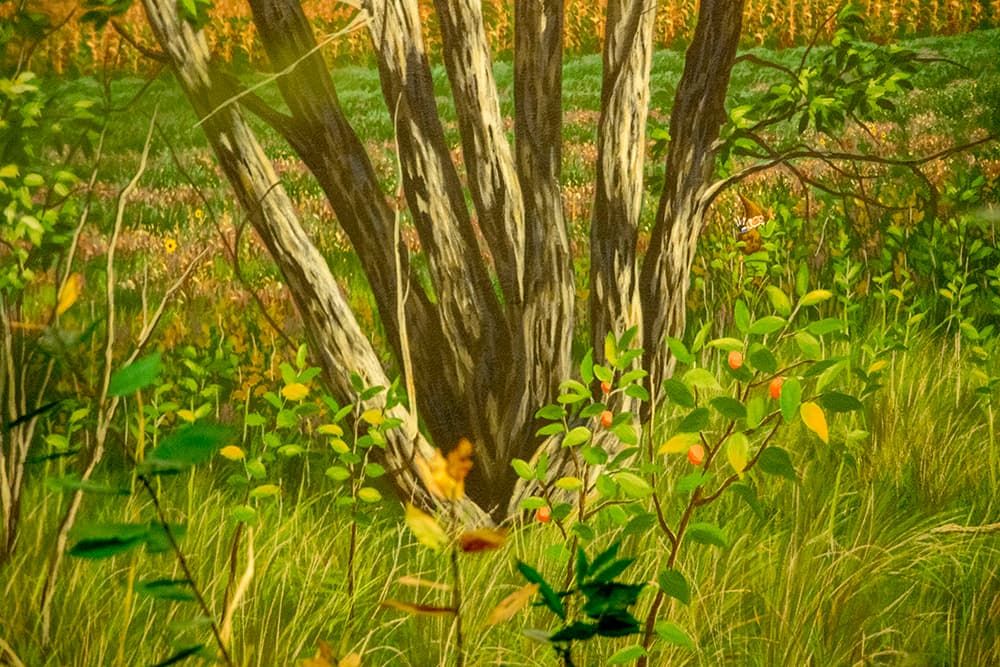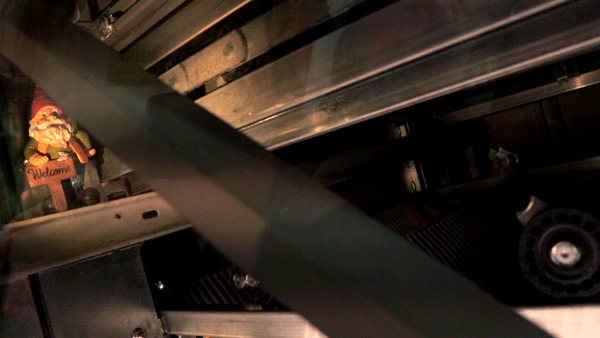
Gather 'round, Denver, and settle on in. Today we'll tell you a tale of adventure — a mystical quest for elusive creatures unknown.
With full bellies, literature and a camera in hand, and the twinkle of curiosity in our eyes, we set out to see something we'd ne'er before seen.
What I mean is that we ate some Mexican food and spent an hour in the Denver Museum of Nature & Science looking for hidden elves in the displays.
If you already know about this, forgive us. You can leave, I guess, or you can stick with us for a whimsical jaunt.
We here at Denverite just learned that Kent Pendleton, the artist responsible for the backgrounds of some exhibits, painted elves into the scenery. Naturally, we wanted to go looking for them ourselves, so Kevin and I set out on the hunt.
But before we embark on this journey, let's get two things out of the way.
- There is some debate as to what Pendleton's creations actually are. The museum's guide calls them elves. The Denverite staff, on the other hand, agrees that they look like gnomes. So, we gave Pendleton a ring.
"I started out calling them leprechauns, but I think the style kind of evolved into elves, so either word is appropriate there. Maybe, technically, they're not really leprechauns.
- Elves, leprechauns and gnomes are neither nature nor science. We know. The museum knows. Please just enjoy a nice thing.
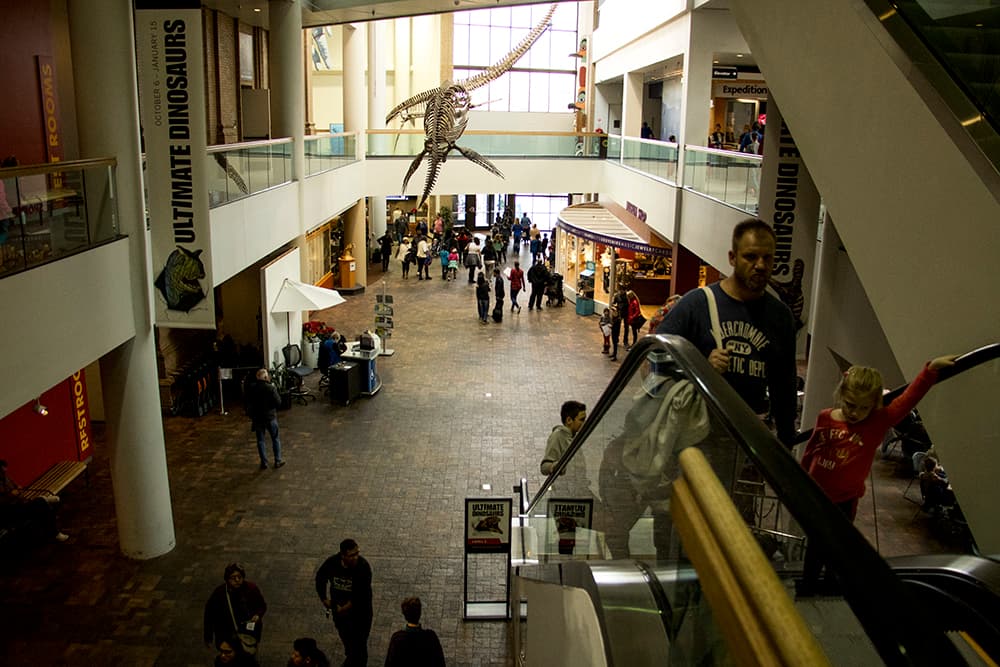
"It was just kind of my own little private joke," Pendleton said. "The first one was so small that hardly anyone could see it, but it sort of escalated over time, I guess. Some of the museum volunteers picked up on it and it developed a life of its own."
So, first thing's first, we got ourselves a guide. The information desk in the entryway of the museum — on the right past the ticket desks — has clue sheets that tell you which exhibits are hiding elves, leprechauns and gnomes, and generally where they are within.

You might at first look think the clues look a little too helpful. I know we did. But trust us when we say you'll be glad you have some guidance. I have perfect vision and I had a tough time spotting Pendleton's creations, even with pretty explicit directions, and you don't want to be painstakingly searching the backgrounds of every single diorama. (To be honest: kids kept finding them faster than I did.)
"I never really made them easy to find because I didn’t want to detract from the exhibits," Pendleton said.
The little dude at the top of this story is probably the most well-known at the museum, though he's not one of Pendleton's creations. As museum ambassador Drew Kieckhafur explained to us, staff hid some gnomes figurines throughout the museum to add to the game they'd created around Pendleton's work.
One of the other figurines, which Kieckhafur correctly called the ugliest, is hiding on the surface of Mars. He's hard to spot, but as with all of these, I won't ruin your fun with explicit directions.
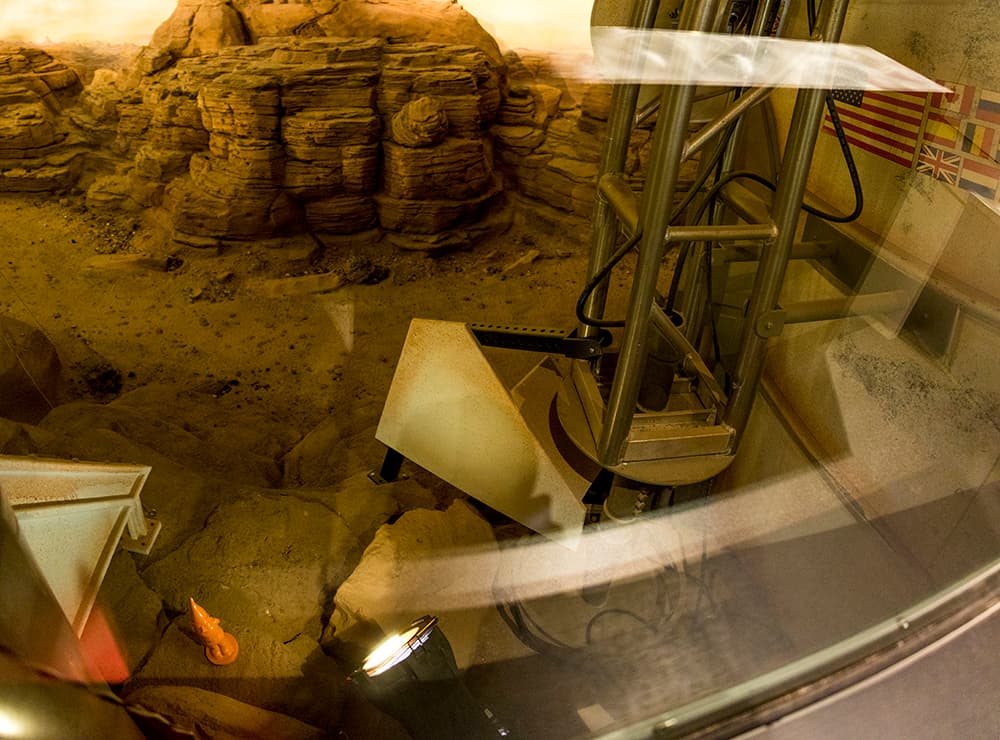
Anyway, off we went into the earthbound wild, where we encountered a great many horned ungulates.
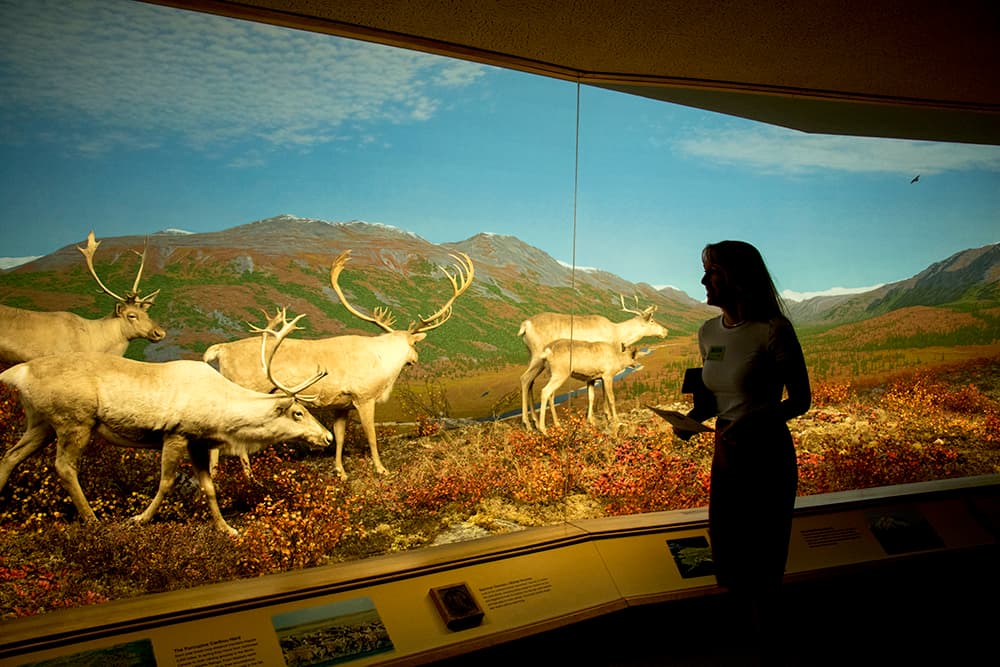
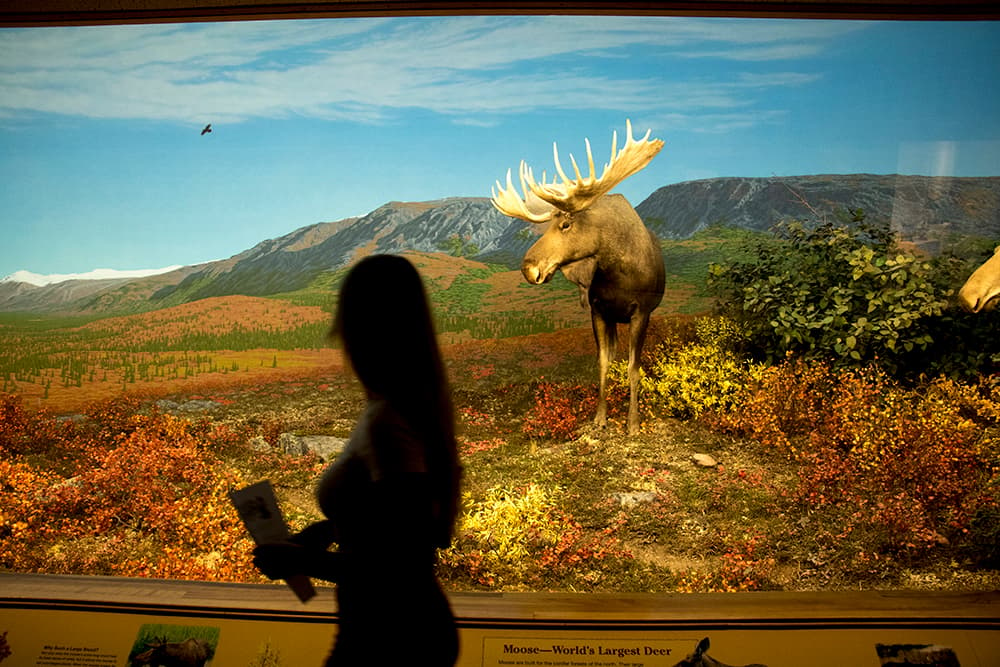
Here we found some brave little men living amongst large, hooved mammals that could accidentally stomp on them. The one pictured below is undoubtedly a leprechaun (and not one of Pendleton's creations).
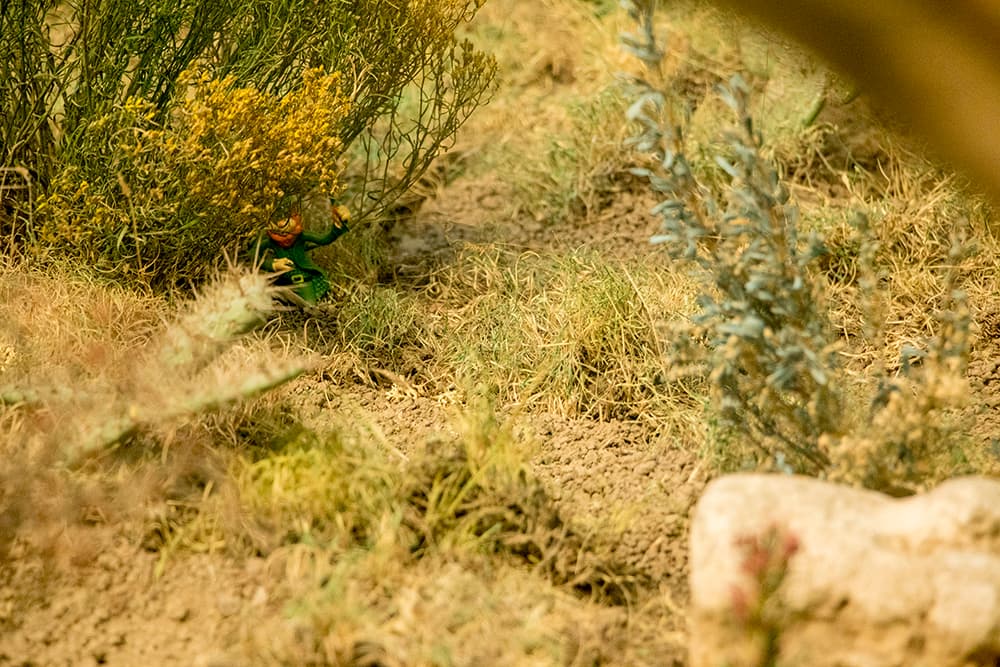
Eventually we arrived at an environment more friendly to elf habitation, where the only other living creatures in sight were no bigger than a bird or small rodent.

The elves/leprechauns are extremely well camouflaged in these woodsy environments. This kindly looking fellow below took me an especially long time to find.
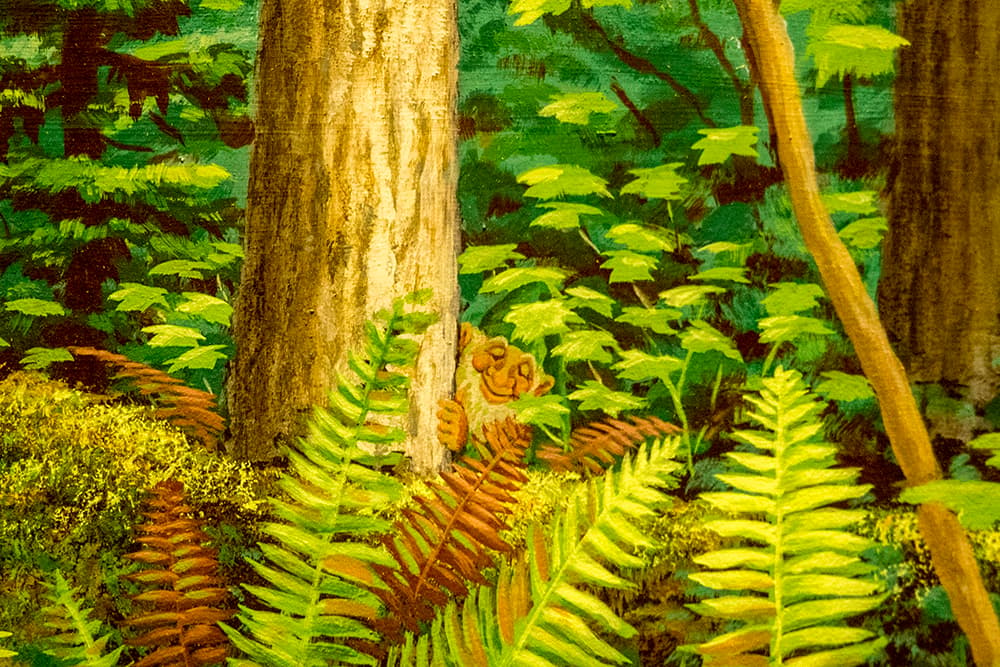
Elsewhere, we spotted an elfrechaun dipping his feet in a stream.
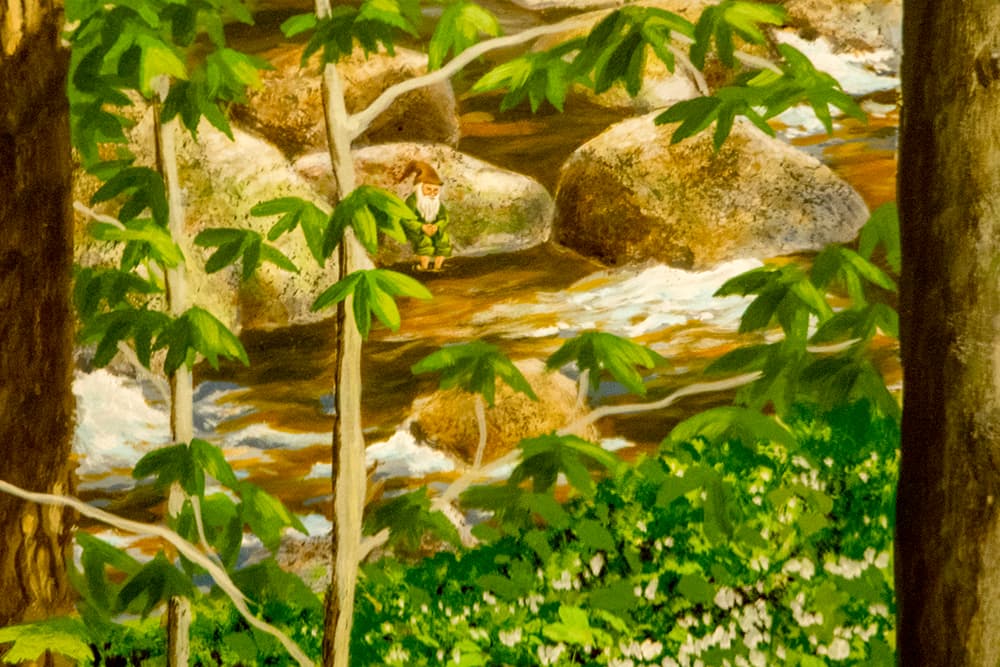
In fact, one thing we learned about the leprelves is that they enjoy sitting near running water.
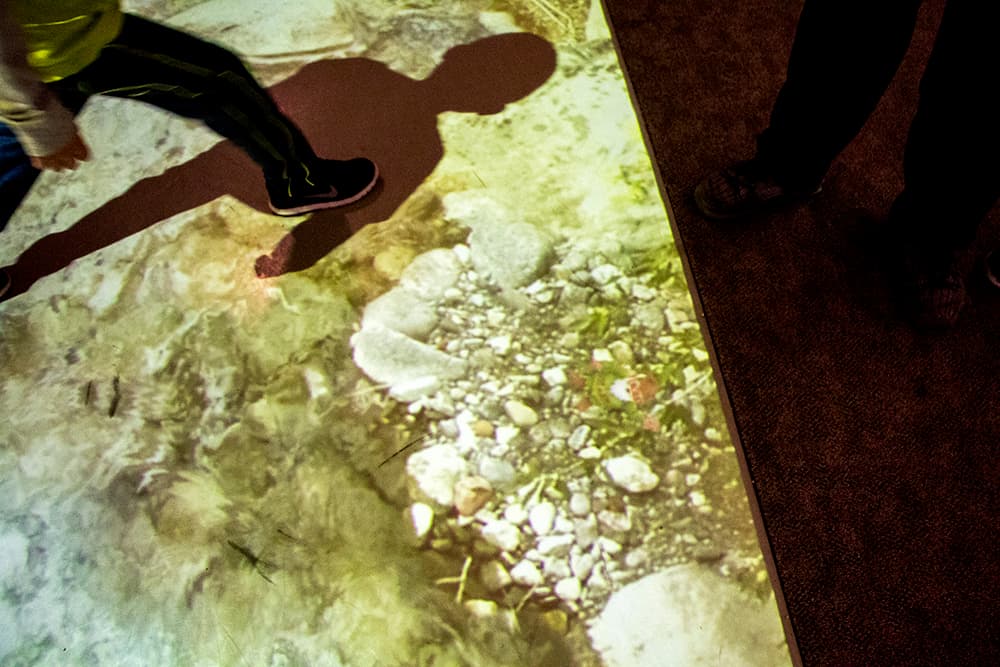
There's one more near running water, and a couple of the most fearless of these little men walk with the dinosaurs. Kieckhafur insisted that the best of Pendleton's little buddies can be found in prehistoric times.
But we've exposed enough already.
You can go searching for yourselves at 2001 Colorado Blvd. any day of the week between 9 a.m. and 5 p.m. Admission is $11.95 for kids 3-18, $13.95 for seniors 65 and older and $16.95 for all other adults. Check this schedule for days when admission is free.
You can also find Pendleton's work at the Denver Zoo, as well as visitors' centers and museums around the country — including the New Mexico Museum of Natural History & Science in Albuquerque, the South Carolina State Museum in Columbia, the Wyoming State Museum in Cheyenne and the Loveland Museum Gallery here in Colorado.
And, yes, he says you can find his artistic signature in some of those places, too.
Here's an especially tough one for practice:
